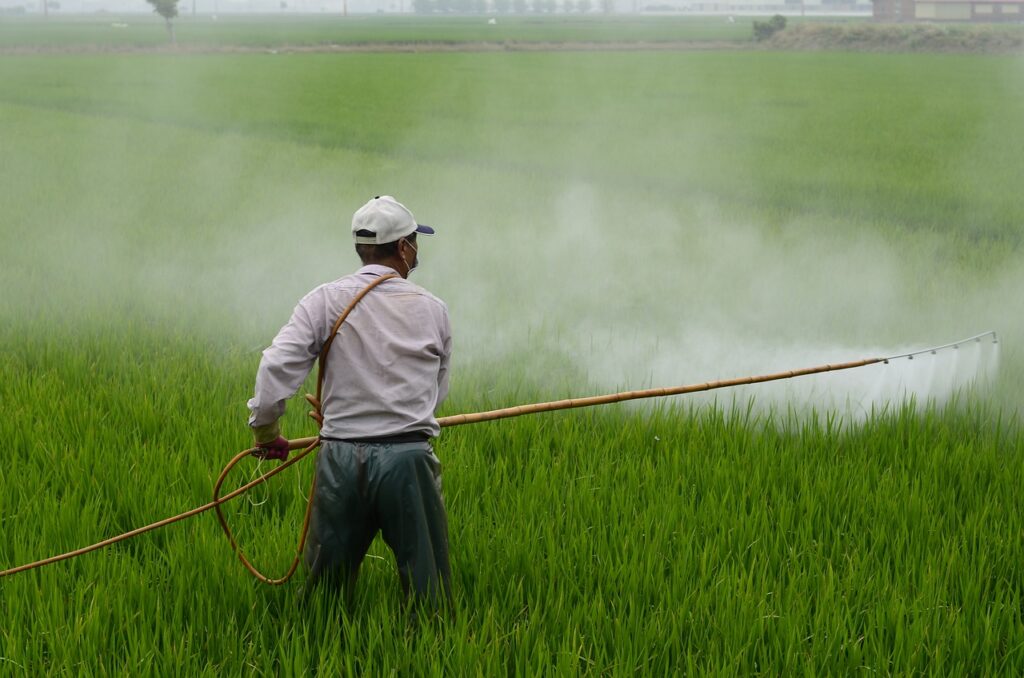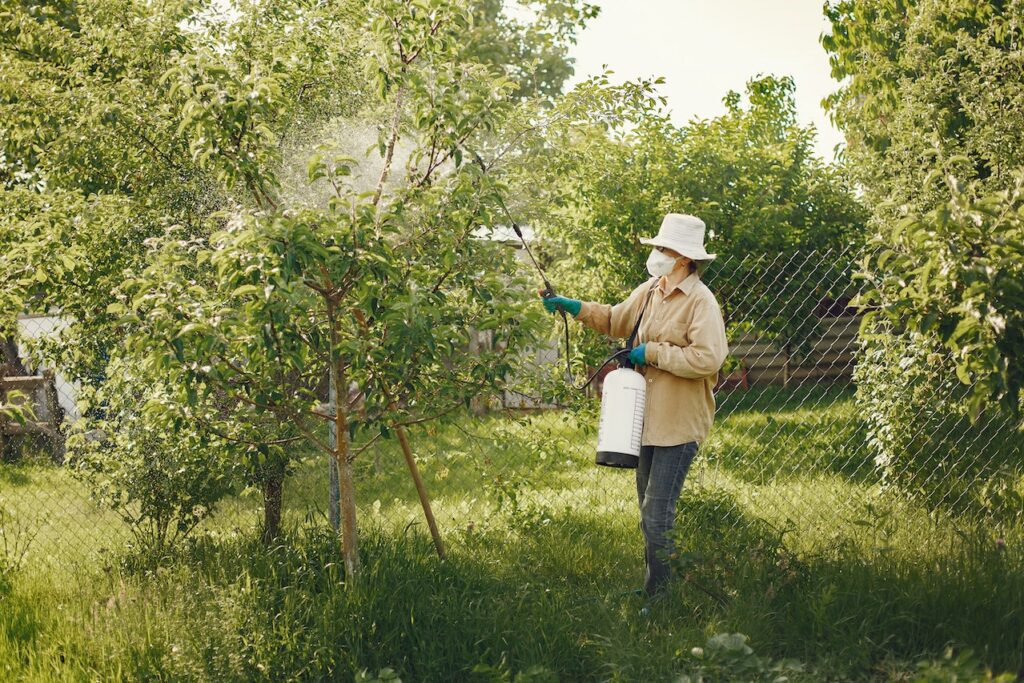Since its launch in the 1970s, Roundup, a glyphosate-based herbicide, has become the most popular weed killer worldwide. However, recent studies are raising questions about whether exposure to glyphosate, the main ingredient in Roundup, could potentially lead to cancer in humans. The scientific community is still debating these findings.
Roundup was first introduced to the market by Monsanto in 1974. The brand, now owned by Bayer, offers a range of products that contain the ingredient glyphosate. While initially designed for farming, Roundup has been a household name for garden and lawn care for years now. However, its reputation took a hit in 2015 when the United Nations classified glyphosate as “likely cancer-causing.” This triggered debates on Roundup’s safety, with varying responses from regulatory agencies and jurisdictions.
In 2017, the U.S. Environmental Protection Agency (EPA) suggested that glyphosate was safe, stating it’s “not likely” that it causes cancer. Still, this statement is under review as they continue to investigate glyphosate’s potential health impacts.
Meanwhile, California has been hearing lawsuits in regards to Roundup. In 2018, a jury awarded a significant sum of money to an individual who claimed their cancer resulted from glyphosate exposure. As such, the conversation around the safety of Roundup continues to evolve.
Glyphosate 101
Glyphosate is the one of the most popular herbicides in agriculture around the world, and the second most popular for residential use. It’s a non selective herbicide, meaning it can kill nearly any plant that comes into contact with it. Glyphosate works by blocking a crucial plant growth pathway, preventing them from creating necessary proteins—resulting in the plant’s death within as little as a few days. This pathway is not found in humans or animals.
To ensure glyphosate stays where it’s applied, it’s often mixed with chemicals that bind it to the soil and weeds, minimizing drift and protecting desired plants and crops.
In 2000, Monsanto’s glyphosate patent expired, opening the door for competitors to produce and sell glyphosate-based herbicides. By 2015, there were over 750 glyphosate-containing products available for sale in the United States, as reported by the National Pesticide Information Center.
Glyphosate is typically sold as a spray, it can also come as an acid or salt-based pesticide. It’s applied through ground-level machinery, aerial spraying, or handheld sprayers.
While it’s used extensively on a wide range of crops, including fruits, vegetables, and cereals, it’s most commonly used on soybean and corn crops, accounting for about two-thirds of its use each year.
Interesting Fact:
Roundup, along with other glyphosate-based pesticides from Monsanto, are sold in 130 countries and authorized for use on 100 different types of crops.

Popularity of Roundup Weed Killer
In 1966, Glyphosate usage soared when Monsanto launched Roundup Ready crops. These genetically modified seeds were resistant to glyphosate, meaning farmers could apply the herbicide and only the weeds would die while the crops kept growing.
Before this innovation, farmers would apply Roundup before crop emergence or after harvesting to eliminate remaining weeds. With the new seeds, glyphosate could be used throughout the growing season, leading to a significant increase in its use—up to three times the previous amount.
Genetically engineered crops made up 56% of global glyphosate use by 2016. One study showed that glyphosate usage had increased almost 15-fold within 18 years. While glyphosate has been available since 1974, 75% of all usage in the United States happened between 2004 and 2014.
By 2016, the Environmental Protection Agency estimated that annual glyphosate use had reached between 280 and 290 million pounds. While the increase was partly due to more farms using the herbicide, the EPA report suggested that “it is more likely that individuals already using glyphosate increased their use and subsequent exposure.”
How Glyphosate Works
Glyphosate is combined with additional chemicals to ensure it adheres to weeds and doesn’t unintentionally harm nearby crops. This mixture can be applied using a variety of methods, such as farm machinery, aerial sprayers, or handheld devices.
Once applied, the plant leaves soak up the glyphosate, spreading it throughout the entire plant, including the roots. The glyphosate then disrupts the plant’s shikimic acid pathway, inhibiting the production of certain growth-essential proteins.
Roundup Product Risks
There’s an ongoing international debate about whether chronic glyphosate exposure can cause non-Hodgkin lymphoma cancer. In 2015, the International Agency for Research on Cancer, a branch of the United Nations WHO, deemed it “probably carcinogenic.”
However, the U.S. Environmental Protection Agency, one of the regulatory agencies in charge of overseeing herbicide products, has not officially said that glyphosate increases the risk for cancer. The agency is still investigating the potential risks of the herbicide as part of a routine review.
A study published in Mutation Research in 2019 suggested a correlation between high-use, long-term exposure to glyphosate, and a 41% increased risk of being diagnosed with non-Hodgkin lymphoma. Monsanto, the company behind Roundup, asserts that “over 800 rigorous registration studies” required by international agencies haven’t demonstrated a cancer risk. According to Monsanto, Roundup is safe when used as directed.
However, an internal Monsanto memo from 2003 warned executives against claiming that Roundup is not carcinogenic. One of the company’s scientists stated that it has not done the required testing to make this assertion.
The National Pesticide Information Center reports no available information linking glyphosate to diseases other than cancer. This NPIC, as well as the EPA and WHO, have examined the risks of glyphosate remnants on food and water, as well as its potential impact on pregnant women, children, pets, and the environment.
Pregnant Women and Children Risks
The National Pesticide Information Center advises that children may be more susceptible than adults to the risks associated with pesticide exposure. However, there’s no specific research suggesting a heightened sensitivity in children towards glyphosate herbicides.
Children’s developing organs, such as their kidneys and liver, might not eliminate pesticides as effectively as adults. Other factors, including their proximity to the floor, higher breathing rate, larger skin surface in relation to weight, and their increased likelihood to put things in their mouth can increase their exposure to pesticides.
For these reasons, the center suggests reducing children’s exposure to all herbicides, following label instructions carefully, and reducing risks by washing children’s hands after they’ve been in areas that have been treated with pesticides.
Regarding pregnancy, studies involving rats have shown elevated levels of glyphosate exposure can cause illness and some reproductive and developmental problems. Rat fetuses that were exposed to elevated levels of glyphosate encountered weight gain issues, and some experienced skeletal defects. These issues weren’t observed in rats that were exposed to lower glyphosate levels. However, no significant human studies have explored the impact of glyphosate on pregnancy.
Animal and Pet Risks
Glyphosate can pose short-term complications for animals that come into contact with or consume plants that have recently been sprayed with glyphosate. However, research into its long-term effects on animals is currently limited.
The EPA classifies glyphosate as “slightly toxic” at most to birds and “practically non-toxic” to bees and small aquatic creatures, including shellfish, worms, and insects.
Certain versions of glyphosate are formulated specifically for managing aquatic plants. While glyphosate itself has minimal toxicity risks to fish, some glyphosate herbicides might include other chemicals that could be harmful to them. Hence, the EPA advises users to adhere to the product’s instructions to prevent any harm to fish and their environment.
Glyphosate Poisoning Symptoms in Animals:
- Lethargy
- Drooling
- Diarrhea
- Loss of Appetite
- Nausea
Glyphosate and Food
The World Health Organization states that glyphosate residues on food are unlikely to pose a cancer risk. They found that most people are exposed to glyphosate through food and water. However, a panel of pesticide experts within the agency concluded in 2016 that the amounts of the chemical ingested through diets are typically insufficient to pose a risk.
The Environmental Protection Agency evaluates toxicity based on long-term exposure, potentially spanning a lifetime. According to the agency’s guidelines, a man weighing 200 pounds could consume almost 159 milligrams (or 0.0056 ounces) of glyphosate daily without experiencing significant adverse effects.

Environmental Health Risks
The National Pesticide Information Center states that glyphosate breaks down in dead leaves in about a week. However, depending on the soil and weather conditions, it can persist in the soil for up to half a year. Given its strong bond to the soil, groundwater contamination risks are low.
Overuse of glyphosate has led to some weeds developing a resistance to it. A study published in Pest Management Science in 2014 reported that at least 24 species were resistant to glyphosate. Sixteen of these resistant species were found in crops sown with Roundup Ready crops, which presents a challenge in managing them as there are very few alternative methods available.
Is Roundup Safe?
The EPA states that glyphosate has “low toxicity for humans,” implying it would typically require substantial exposure to become harmful. However, other ingredients in glyphosate-based herbicides could potentially make some variants more toxic than others.
Understanding the added chemical risks or how they interact with glyphosate can be challenging for researchers because manufacturers often treat them as trade secrets. This means they aren’t obligated to disclose the chemicals in the ingredients list, making it hard for researchers to identify what chemicals are present in specific herbicides and their quantities.
Despite this, the EPA suggests a list of precautions for the safe use of these products.
EPA Precautions for Glyphosate:
- Always follow the instructions on the product label.
- Wear protective eyewear when using herbicides that could cause eye irritation.
- Avoid areas that have been sprayed for at least 12 hours after application.
Exposure to glyphosate can occur if it’s inhaled or comes into contact with your skin or eyes. The herbicide doesn’t easily evaporate after application, so it typically stays where it’s sprayed.
Although it’s difficult for glyphosate to be absorbed through the skin, it’s still crucial to wash your hands thoroughly after handling the chemical or touching plants that have been sprayed with it. If you eat with unwashed hands, you may ingest some of the herbicide.
Short-term exposure to glyphosate can result in skin and eye irritation. Inhalation might cause nose and throat discomfort, while swallowing the chemical could lead to mouth and throat burns, as well as symptoms like diarrhea, nausea, and vomiting. Consuming large quantities of glyphosate intentionally can be life-threatening.
Roundup Alternatives
There are alternatives to Roundup for both household and commercial landscaping uses. However, finding substitutes for large-scale agricultural applications has proven to be more challenging.
Alternatives to Roundup:
- Manual Removal
- Vinegar
- Fire
- Hot-foam weeding
- Steam
- Mechanical Farming (plowing, no-till)
- Other herbicides
Did you know?
Just because something is labeled as “natural” doesn’t guarantee it’s safe. Most herbicide alternatives, like vinegar and natural oils, can be more harmful to human skin than glyphosate or other artificial pesticides. It’s essential to prevent these alternatives from being inhaled or coming into contact with skin or eyes.
References
- https://academic.oup.com/jnci/article/110/5/509/4590280
- https://extension.umd.edu/resource/vinegar-alternative-glyphosate
- https://jhoonline.biomedcentral.com/articles/10.1186/s13045-019-0767-9
- https://jneuroinflammation.biomedcentral.com/articles/10.1186/s12974-022-02544-5
- https://www.bayer.com/media/en-us/bayer-provides-update-on-path-to-closure-of-rounduptm-litigation/
- https://www.bloomberg.com/news/articles/2019-10-10/why-u-s-cities-are-banning-glyphosate-pesticides
- https://www.clinical-lymphoma-myeloma-leukemia.com/article/S2152-2650-21-00151-8/fulltext
- https://www.mcgill.ca/newsroom/channels/news/widely-used-weed-killer-harming-biodiversity-320906
- https://www.ncbi.nlm.nih.gov/pmc/articles/PMC6663540/
- https://www.pnas.org/doi/full/10.1073/pnas.1922287117
- https://www.reuters.com/business/healthcare-pharmaceuticals/bayer-sees-2023-results-lower-end-range-weedkiller-prices-drop-2023-05-11/
- https://www.reuters.com/legal/government/bayer-reaches-69-mln-settlement-with-new-york-over-roundup-safety-claims-2023-06-15/
- https://www.sciencedirect.com/science/article/abs/pii/S0045653523009438
- https://www.sciencedirect.com/science/article/abs/pii/S0304394020303025
- https://www.sciencedirect.com/science/article/pii/S2667010021001281
- https://npic.orst.edu/factsheets/glyphogen.html
